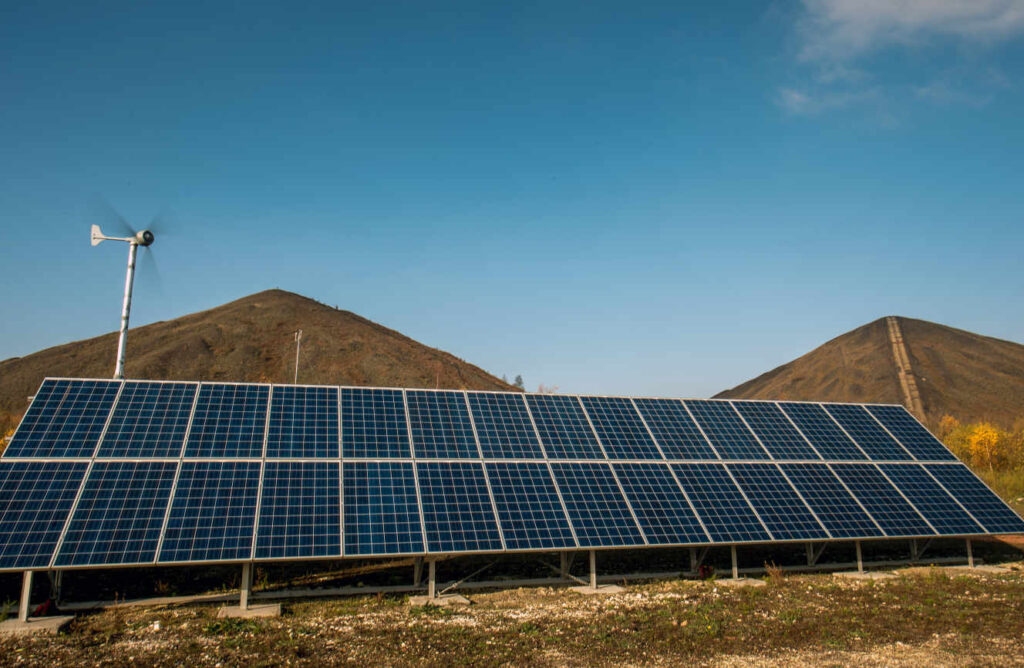A grid-connected photovoltaic (PV) system, also known as a grid-tied solar system, is designed to generate electricity from sunlight and feed it into the electrical grid. These systems consist of several key components that work together to capture solar energy and convert it into usable electricity.
- Solar Panels (Photovoltaic Modules): Solar panels, made up of multiple photovoltaic (PV) cells, are responsible for capturing sunlight and converting it into direct current (DC) electricity. Panels are usually mounted on rooftops or ground-mounted structures to maximize exposure to sunlight.
- Inverter: The inverter is a critical component that converts the DC electricity generated by the solar panels into alternating current (AC) electricity, which is compatible with the electrical grid and household appliances. Grid-tied inverters also synchronize the system’s output with the grid’s voltage and frequency.
- Mounting Structure: Solar panels are mounted on sturdy structures, such as rooftop racks or ground mounts, to ensure they are securely positioned and properly oriented for optimal sun exposure. Mounting structures may include tracking systems that follow the sun’s path for increased efficiency.
- DC Disconnect: A DC disconnect switch or circuit breaker is installed between the solar panels and the inverter. It allows for the safe disconnection of the DC power supply during maintenance or emergencies.
- AC Disconnect: An AC disconnect switch or circuit breaker is placed between the inverter and the main electrical panel of the building. It allows for the isolation of the solar system from the grid or the building’s electrical system when needed.
- Metering and Monitoring Equipment: To track the system’s performance and measure the electricity production, various metering and monitoring devices are installed. These may include production meters, consumption meters, and data loggers. Some systems also have remote monitoring capabilities to monitor performance and troubleshoot issues online.
- Utility Meter: A bi-directional utility meter is typically installed by the utility company. This meter measures both the electricity consumed from the grid and the excess electricity generated by the solar system that is fed back into the grid. This net metering arrangement allows homeowners to receive credits or compensation for surplus electricity.
- Grid Connection: The grid connection point is where the system ties into the local electrical grid. The grid acts as a backup power source when the solar system isn’t producing enough electricity, and it accepts surplus electricity when the system generates more than the building’s needs.
- Combiner Box: In larger solar installations with multiple strings of solar panels, a combiner box may be used to bring together the DC output from the individual strings and feed them into the inverter efficiently.
- Grounding and Wiring: Proper grounding and wiring ensure the safety and functionality of the system. Grounding helps protect against electrical faults and lightning strikes, while appropriately sized wiring ensures the efficient flow of electricity.
- Protection Devices: Circuit protection devices, such as fuses or breakers, are installed at various points in the system to prevent overcurrent and protect against electrical faults.
- Structural and Electrical Safety Components: These include roof penetration flashings (if rooftop-mounted), weatherproof enclosures for electrical components, and safety labels or signage for emergency responders.
A grid-connected PV system is designed to generate electricity for on-site consumption while also allowing excess energy to be exported to the grid. This type of system is cost-effective, environmentally friendly, and can often lead to energy cost savings, especially in regions with favorable solar conditions and net metering policies.


